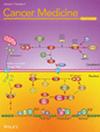Imaging-Based Prediction of Ki-67 Expression in Hepatocellular Carcinoma: A Retrospective Study
Abstract
Aim
This study aims to develop a non-invasive, preoperative predictive model for Ki-67 expression in HCC patients using enhanced computed tomography (CT) and clinical indicators to improve patient outcomes.
Methods
This retrospective study analyzed 595 post-curative hepatectomy HCC patients. Patients were categorized into high (> 20%) and low (≤ 20%) Ki-67 expression groups based on cellular proliferation levels. Radiomic features were extracted from enhanced CT scans and combined with clinical parameters to develop a predictive model for Ki-67 expression.
Results
Key clinical factors impacting Ki-67 expression in HCC included alpha-fetoprotein (AFP), non-smooth tumor margin, ill-defined pseudo-capsule, and peritumoral star node. From 1441 initially extracted radiomic features, 16 key features were selected using Lasso regression. These features were used to develop a radiomics model, which, when combined with clinical data, yielded an integrated predictive model with high accuracy. The combined model achieved an area under the curve (AUC) of 0.854 in the training group and 0.839 in the validation group. A nomogram based on this model was constructed, and its predictive accuracy was validated through calibration curves and decision curve analysis. A risk scorecard model was also constructed as a practical tool for clinicians to assess the risk level of high Ki-67 expression, facilitating personalized treatment planning. Survival analysis demonstrated significant differences in 3-year overall survival (OS) and progression-free survival (PFS) rates between patients with high and low Ki-67 expression, indicating the model's strong prognostic capability.
Conclusions
This study successfully developed a comprehensive model that integrates radiomic and clinical data for the preoperative prediction of Ki-67 expression in HCC patients.


 求助内容:
求助内容: 应助结果提醒方式:
应助结果提醒方式:


